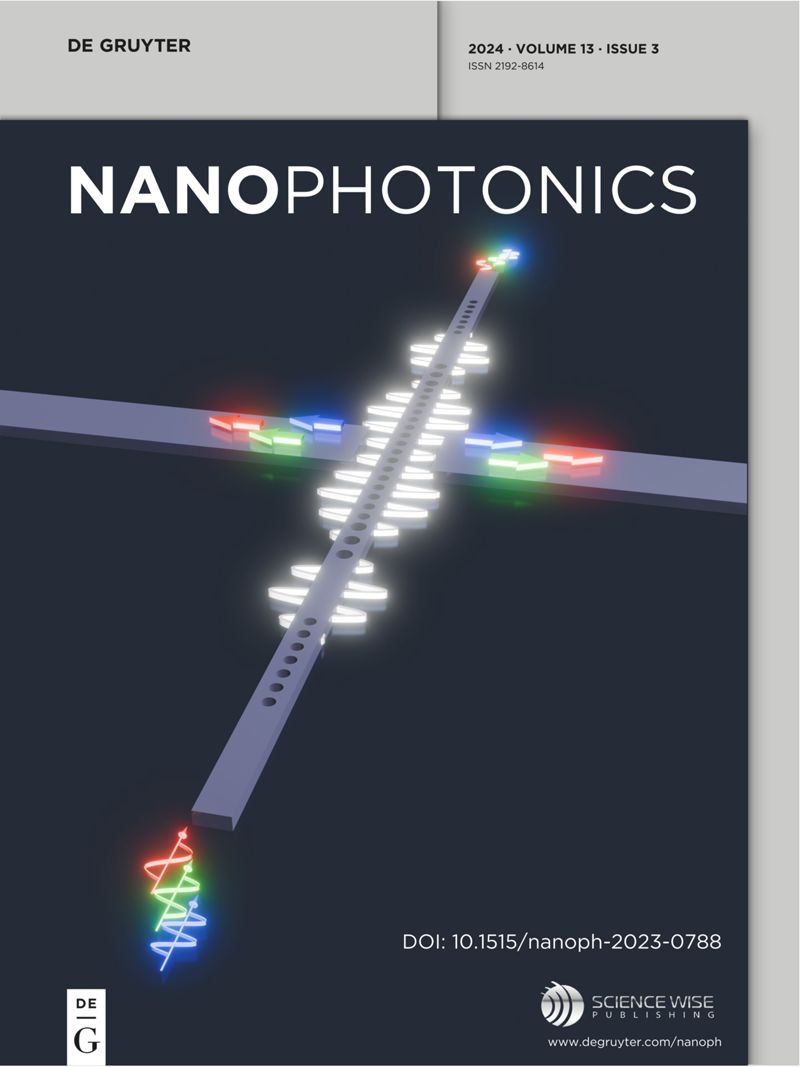高q -对比度太赫兹量子级联激光器在连续体中的带隙限制束缚态
IF 6.5
2区 物理与天体物理
Q1 MATERIALS SCIENCE, MULTIDISCIPLINARY
引用次数: 0
摘要
连续介质中的光子束缚态(bic)是一种与辐射波共存但仍保持高度局域化的光学模式,在基础研究和技术创新中都受到广泛关注。传统的单模BIC激光器主要关注于最大化特定模式的q因子,通常忽略了q -对比度的关键作用-最高q BIC模式和竞争模式之间q因子的差异-这对于实现稳定的单模激光至关重要。在这项研究中,我们提出了一种紧凑的,高q -对比度的BIC激光器,通过战略性地优化核心域的TM1带与壳域的对齐来实现,从而将高q因子模式限制在核心内。使用工作在太赫兹(THz)区域的量子级联激光芯片,该设计实现了大约2.3的q -对比度,从而在整个动态区域产生稳定的单模激光,侧模抑制比为~ 20 dB。这些发现强调了q -对比度在光子激光器中的关键作用,对太赫兹激光器、传感器、谐波信号发生器和调制器的应用具有重要意义。本文章由计算机程序翻译,如有差异,请以英文原文为准。
High Q-contrast terahertz quantum cascade laser via bandgap-confined bound state in the continuum
Photonic bound states in the continuum (BICs) are optical modes that remain highly localized despite co-existing with radiating waves in the continuum, attracting considerable attention for both fundamental studies and technological innovations. Conventional single-mode BIC lasers predominantly focus on maximizing the Q-factor of a specific mode, often overlooking the critical role of Q-contrast – the difference in Q-factors between the highest-Q BIC mode and competing modes – which is crucial for achieving stable single-mode lasing. In this study, we present a compact, high Q-contrast BIC laser, enabled by strategically optimizing the alignment of the TM1 band of the core domain with the shell domain to confine the high Q-factor mode within the core. Using a quantum cascade laser chip operating in the terahertz (THz) regime, this design achieves a Q-contrast ratio of approximately 2.3, resulting in stable single mode lasing across the dynamic region with a side-mode suppression ratio of ∼20 dB. These findings underscore the pivotal role of Q-contrast in photonic lasers, with promising implications for applications in THz lasers, sensors, harmonic signal generators and modulators.
求助全文
通过发布文献求助,成功后即可免费获取论文全文。
去求助
来源期刊

Nanophotonics
NANOSCIENCE & NANOTECHNOLOGY-MATERIALS SCIENCE, MULTIDISCIPLINARY
CiteScore
13.50
自引率
6.70%
发文量
358
审稿时长
7 weeks
期刊介绍:
Nanophotonics, published in collaboration with Sciencewise, is a prestigious journal that showcases recent international research results, notable advancements in the field, and innovative applications. It is regarded as one of the leading publications in the realm of nanophotonics and encompasses a range of article types including research articles, selectively invited reviews, letters, and perspectives.
The journal specifically delves into the study of photon interaction with nano-structures, such as carbon nano-tubes, nano metal particles, nano crystals, semiconductor nano dots, photonic crystals, tissue, and DNA. It offers comprehensive coverage of the most up-to-date discoveries, making it an essential resource for physicists, engineers, and material scientists.
 求助内容:
求助内容: 应助结果提醒方式:
应助结果提醒方式:


